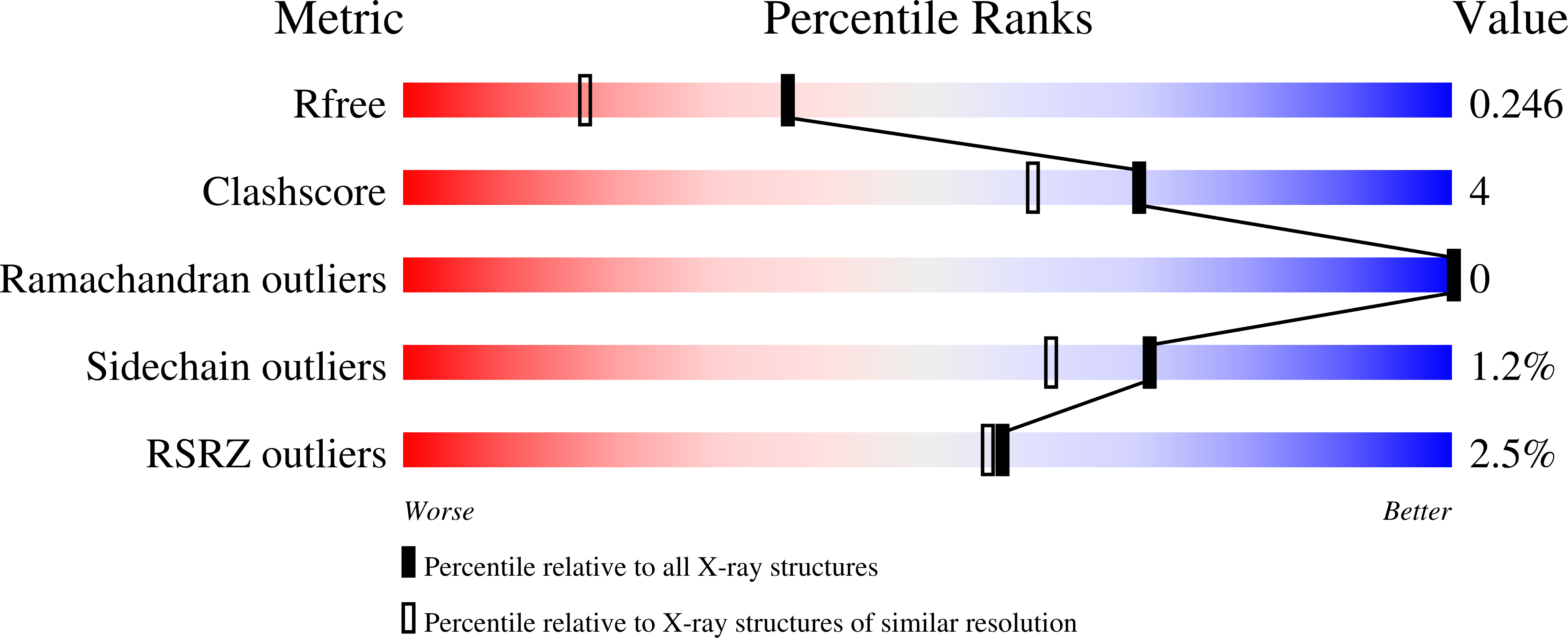Structural analysis of the human galectin-9 N-terminal carbohydrate recognition domain reveals unexpected properties that differ from the mouse orthologue.
Nagae, M., Nishi, N., Nakamura-Tsuruta, S., Hirabayashi, J., Wakatsuki, S., Kato, R.(2008) J Mol Biology 375: 119-135
- PubMed: 18005988
- DOI: https://doi.org/10.1016/j.jmb.2007.09.060
- Primary Citation of Related Structures:
2EAK, 2EAL - PubMed Abstract:
Galectins are a family of beta-galactoside-binding lectins that contain a conserved carbohydrate recognition domain (CRD). They exhibit high affinities for small beta-galactosides as well as variable binding specificities for complex glycoconjugates. Structural and biochemical analyses of the mechanism governing specific carbohydrate recognition provide a useful template to elucidate the function of these proteins. Here we report the crystal structures of the human galectin-9 N-terminal CRD (NCRD) in the presence of lactose and Forssman pentasaccharide. Mouse galectin-9 NCRD, the structure of which was previously solved by our group, forms a non-canonical dimer in both the crystal state and in solution. Human galectin-9 NCRD, however, exists as a monomer in crystals, despite a high sequence identity to the mouse homologue. Comparative frontal affinity chromatography analysis of the mouse and human galectin-9 NCRDs revealed different carbohydrate binding specificities, with disparate affinities for complex glycoconjugates. Human galectin-9 NCRD exhibited a high affinity for Forssman pentasaccharide; the association constant for mouse galectin-9 NCRD was 100-fold less than that observed for the human protein. The combination of structural data with mutational studies demonstrated that non-conserved amino acid residues on the concave surface were important for determination of target specificities. The human galectin-9 NCRD exhibited greater inhibition of cell proliferation than the mouse NCRD. We discuss the biochemical and structural differences between highly homologous proteins from different species.
Organizational Affiliation:
Structural Biology Research Center, Photon Factory, Institute of Materials Structure Science, High Energy Accelerator Research Organization (KEK), 1-1 Oho, Tsukuba, Ibaraki 305-0801, Japan.




















